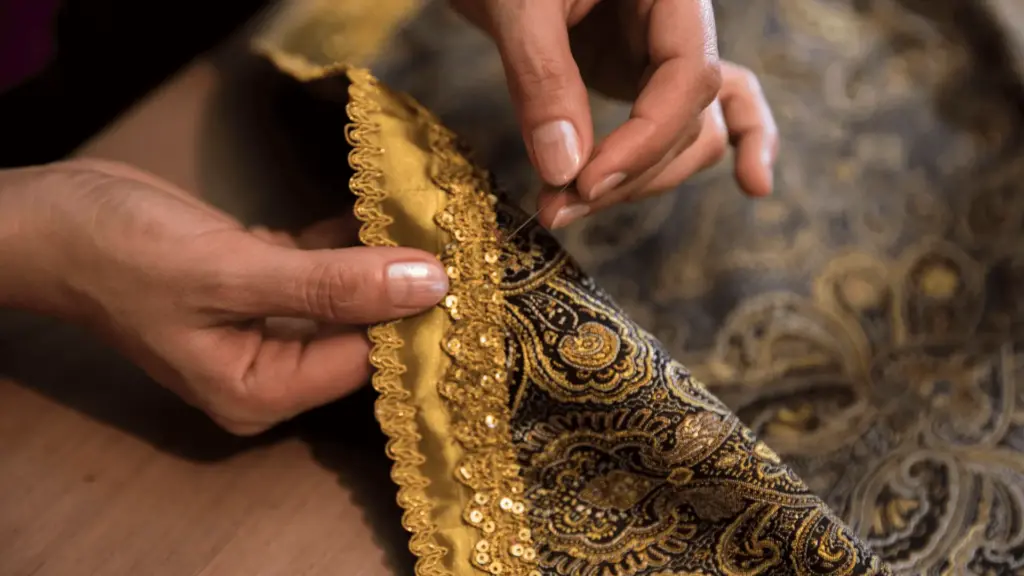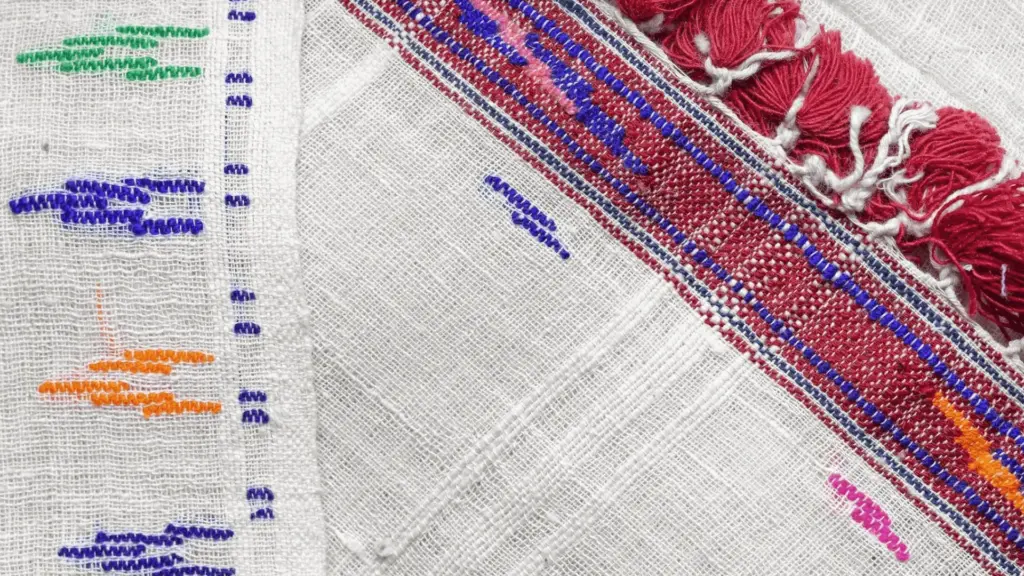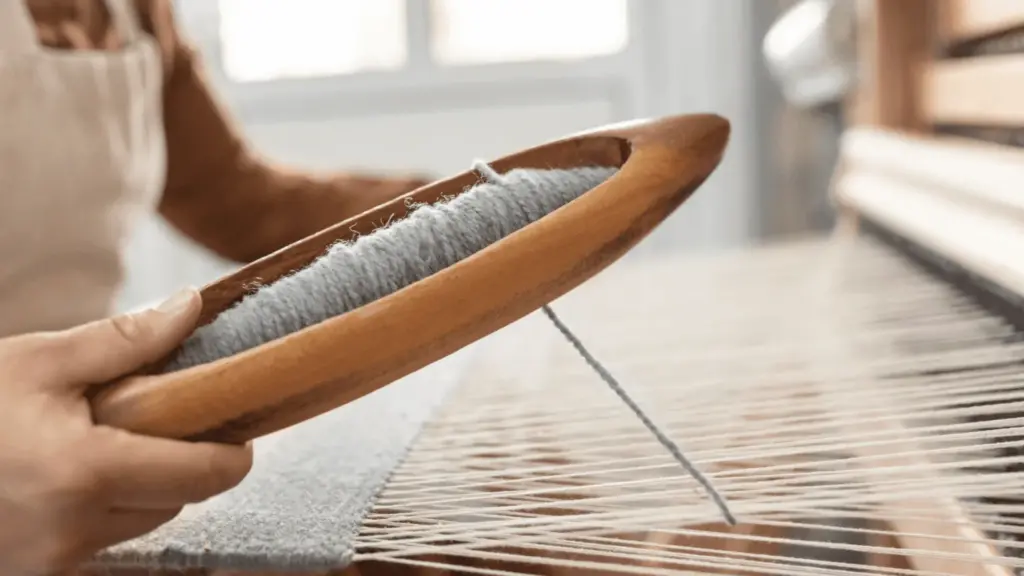Cultural Values
Needle Lace Edgings:
Needle lace is a three-dimensional handcraft created by forming various shaped or knotted loops with a needle and joining them together. Needle lace edgings are predominantly produced by women in the region, primarily for jewelry and embellishment purposes, requiring extensive effort and craftsmanship.
The production and usage of needle lace edgings are widespread in Nallıhan, a district of Ankara located on the historical Silk Road.
The key characteristic of Nallıhan Needle Lace is the utilization of the technique known as "twisting the thread," and it is never done directly on muslin or fabric. The method called "thread twisting," used in Nallıhan Needle Lace, is specific to this craft, whether the lace will be mounted as a separate edging or used as accessory motifs. This technique gives a firm structure to the needle lace and contributes to the durability of Nallıhan Needle Lace during washing, as it is created using this technique. It is essential to preserve the natural state of Nallıhan Needle Lace without the use of any stiffening chemicals.
Typically, Nallıhan Needle Lace features "botanical" motifs such as fruits, leaves, and special flowers. Additionally, "figural" motifs like butterflies, "symbolic" motifs such as playful mustaches or palace brooms, "object" motifs including baskets, bags, and various geometric patterns are also incorporated. Furthermore, depending on the creativity of the artisan, different patterns can be created. On April 9, 2018, Nallıhan Needle Lace was officially registered and granted a geographical indication status.

Nallıhan Coverings:
One of the regions in Ankara that possesses rich examples of handwoven fabrics in Anatolia is the district of Nallıhan. Among the finest weaving examples in Nallıhan, one can find coverings. The presence of Nallıhan on the route of the "Historical Silk Road" and the continuation of silk production in the region through sericulture have played a significant role in the prevalence of these coverings.
Nallıhan Coverings are textiles used to cover the upper part of the body, including the head. They are woven using silk, silk-cotton blends, or cotton threads. The technique of soap washing the warp thread, using a twist called "kız kıvrağı" (reverse twist/reverse twining), is unique to Nallıhan Coverings. The two long edges of the covering feature strips made of brown, mustard, or yellow spun silk. Natural dyes are used to color these threads. At the ends of the stripes, triangular motifs are created using the brocade technique. These motifs are planned to align with the top of the head when the coverings are worn. The central motifs are made on both long edges, allowing the coverings to be used on both sides.
The short edges and the parts that will cover the head are composed of multicolored motifs created using the brocade technique. There are no restrictions on the patterns and colors used in Nallıhan Coverings; however, the most common pattern examples include: "Göbekli" (with a central motif), "Albaşlı" (with a white head), "Zülüf Tarağı" (comb of tresses), "Sarıgöz" (yellow-eyed), "Guguk" (cuckoo), "Bibercik" (little pepper), "Hambarcık" (granary), "İlikli Para" (buttoned money), "Köy Gezen" (village wanderer), and "Koç Boynuzu" (ram's horn).

Nallıhan Coverings can be created using commercially dyed threads as well as threads dyed with natural dyes through boiling. In Nallıhan Coverings, on the two long edges, a thick line and two thin lines are created from mustard, brown, or yellow warp threads, starting from the inner side and moving outward. In addition to the colored threads, threads called "kızkıvrağı" are used as warp threads. The kızkıvrağı threads undergo a soap washing technique during the preparation for weaving. The warp density is arranged with 10 threads per 1 cm. Weaving patterns are created on the short edges using the kilim weaving technique, and on the long edges using the brocade technique. The weaving is done in a plain weave. The width of Nallıhan Coverings ranges from 85 to 104 cm, while the length varies between 118 and 200 cm.
WEAVING
The art of weaving, which involves giving shape to threads on looms and transforming them into fabric, is one of the oldest crafts within traditional Turkish handicrafts. Traditional Turkish textiles, created through a great amount of manual labor using wool, mohair, silk, linen, or cotton, can appear as carpets, kilims, table or tablecloth covers, as well as scarves, shawls, or garments. All these items that can be produced through weaving reflect the centuries-old Turkish culture.

